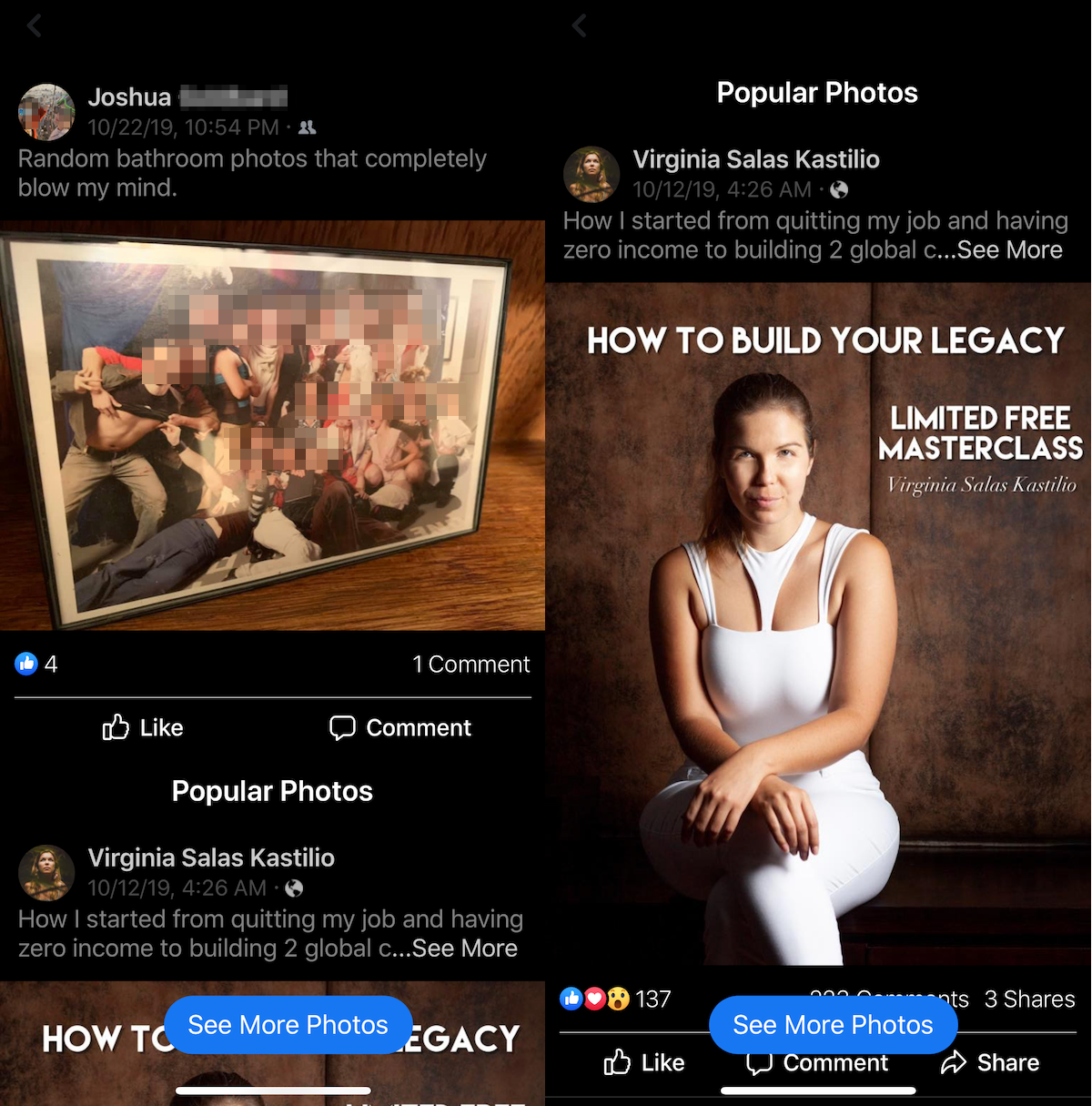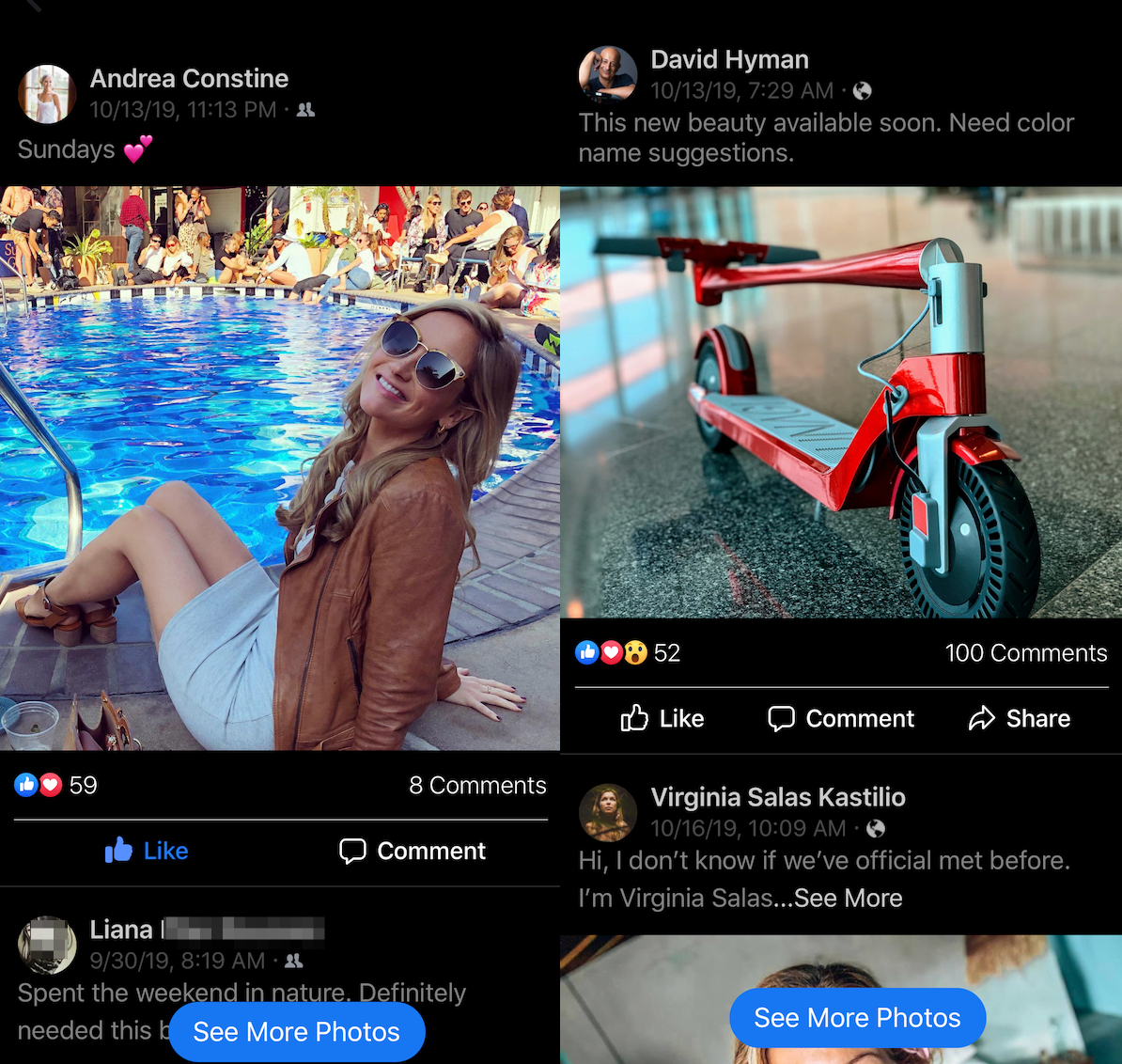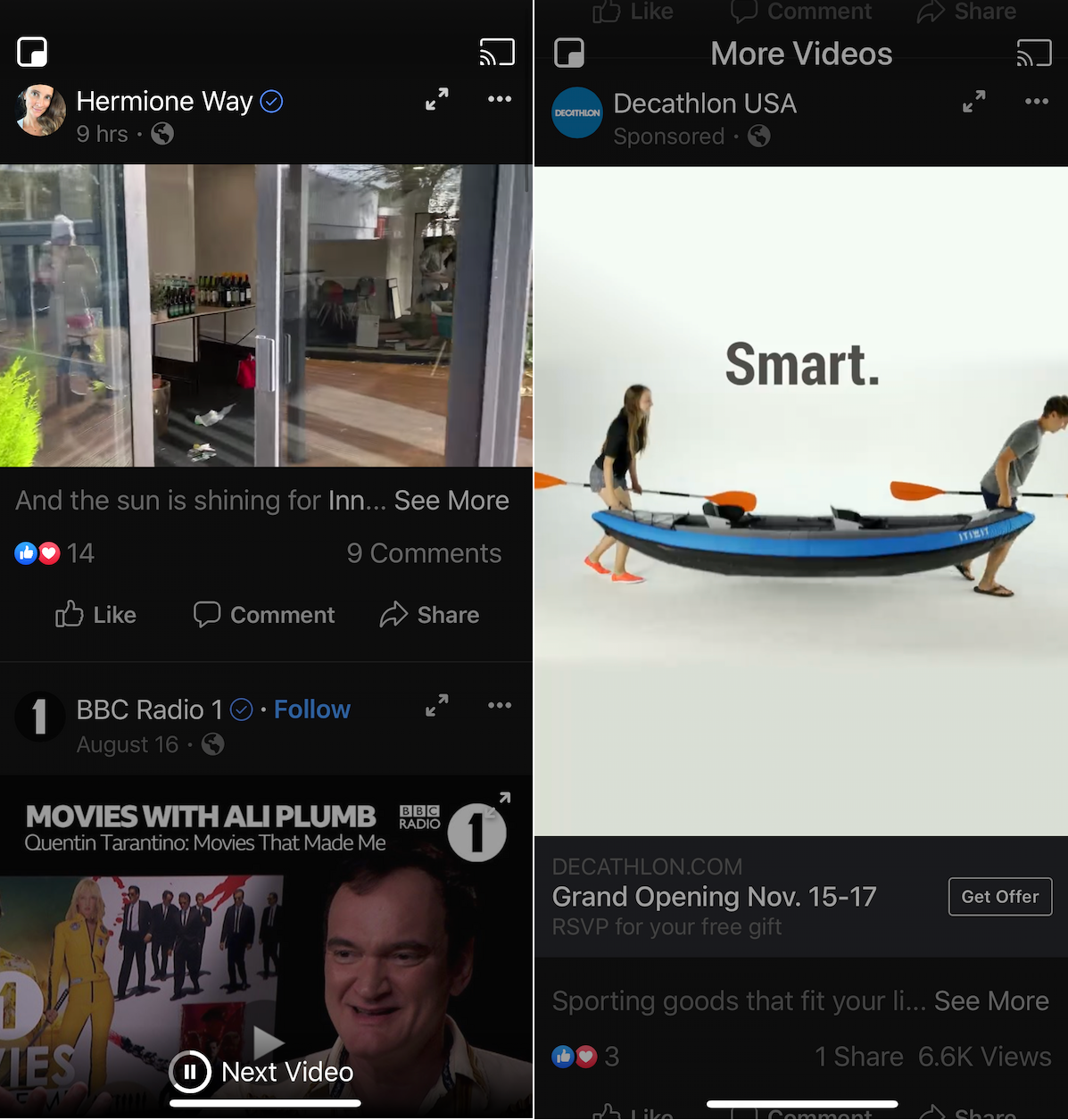Facebook quietly built “Popular Photos”, an in-app Instagram
Facebook is copying Instagram while simultaneously invading its acquisition with branding and links back to the mothership. TechCrunch has spotted Facebook testing a feature called Popular Photos, which affixes an endless scroll of algorithmically selected pics from friends beneath the full-screen view of a photo opened from the News Feed. The result is an experience that feels like the Instagram feed, but inside of Facebook.

Popular Photos could offer users a more relaxing, lean-back browsing experience that omits links you have to click through, status updates you have to read, and other content types that bog down the News Feed. Instead, users can just passively watch the pretty pictures go by.
Facebook’s text and link-heavy feed looks increasingly stodgy and exhausting compared to visual communication-based social networks like Instagram, Snapchat, and TikTok. Users have to do the work of digging into the meaning of News Feed each post rather than being instantly entertained. That experience doesn’t fit as well into short browsing sessions throughout the day, or when users are already drained from work, school, or family. Facebook used to have a dedicated Photos bookmark on desktop that would let you just browse that content type, but at some point it disappeared.
A Facebook spokesperson confirms that Facebook was running a small test of Popular Photos in October when we spotted it. That trial has concluded but the team is now iterating on the product and plans to do updated tests in the future. The company refused to disclose more details or its motives for Popular Photos. Given Facebook already has Stories, messaging, profiles, and its IGTV-esque Watch video hub, it’s only the Explore tab and a dedicated media feed that are missing from it being a full clone of Instagram.

Here’s how Popular Photos works. When users discover a photo in the News Feed or a profile, they can tap on it to see it full-screen on a black theater-view background. Typically, if users swipe or scroll on that photo, they’re just booted back out to where they came from. But with the Popular Photos feature, Facebook splays out more images for users to scroll through after the original.
By scrolling down past the Popular Photos title, they’ll see additional pics and a “See More Photos” label beckoning them to keep whipping through more public and friends-only images shared by friends and who they follow. Like on Instagram but unlike the News Feed, Facebook truncates the captions of Popular Photos after only around 65 characters so the stream doesn’t look overwhelmingly wordy. The black backgrounds give a more cinematic feel to the Popular Photos, putting emphasis on the imagery.

Facebook started showing Related Videos in 2014 when users scrolled past a video they’d opened full-screen. Now this “More Videos” feature will auto-play the next video and automatically bump users down the feed to view it. The feature even shows video ads. That could foreshadow Facebook inserting advertisers’ photos into the Popular Photos tab to monetize the extra browsing.

Facebook hasn’t been shy about trying to leverage Instagram to benefit itself. The company has placed an Open Facebook button in the Instagram navigation sidebar.
Previously, Instagram tried showing Facebook alerts in its own Notifications tab, and an annoying red counter for Facebook notifications on the three-line hamburger button that opens the Instagram sidebar in an attempt to drive referral traffic back to the Facebook app. Facebook has also tried notifying users in its app asking them to Like the Facebook Pages of people they follow on Instagram. And now, a “from Facebook” and new FACEBOOK logo can be found appended to the Instagram loading screen.

For Facebook to keep growing after 15 years in the market, it needs to fully embrace visual communication. It’s already copied Snapchat Stories and implemented the ephemeral photo and video format across its apps. Clearly it’s not above copying its own subsidiary Instagram to offer an alternative take on feed scrolling. I wonder how Instagram’s team feels about its parent company building a direct competitor?
Powered by WPeMatico